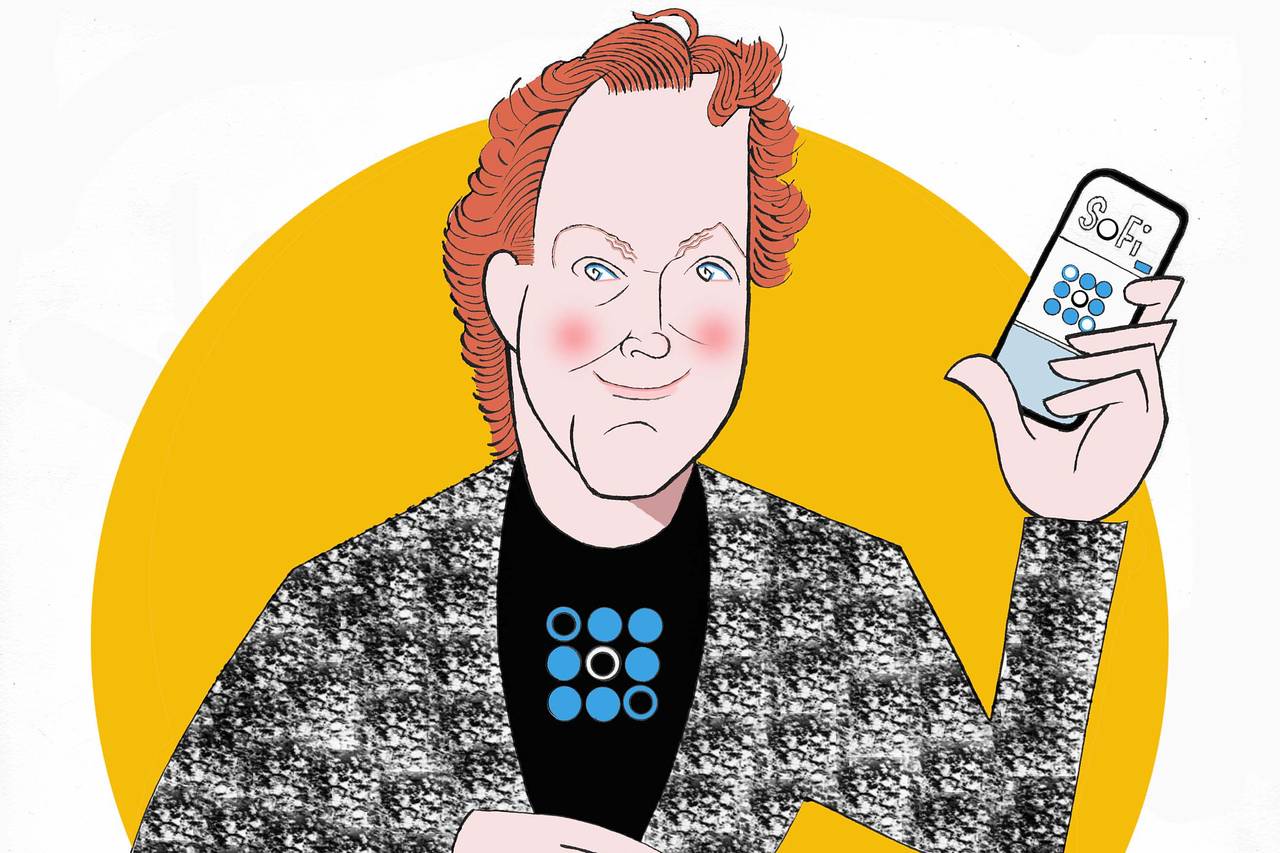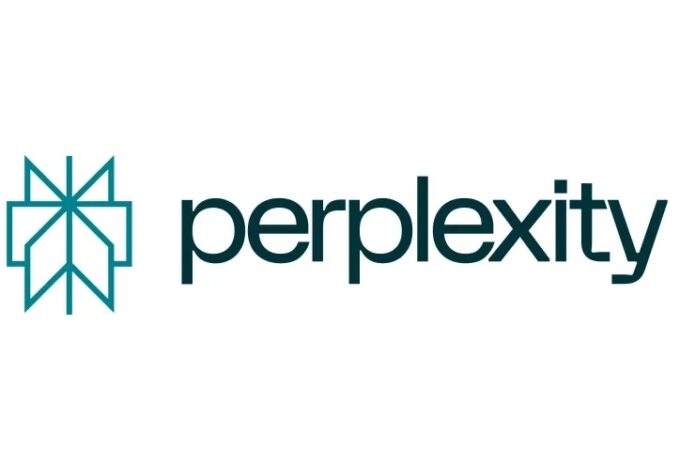
The Uberization of Banking
In this city’s crowded financial district you’ll find a Wells Fargo Bank branch with an antique stagecoach inside. But I was interested in talking with a former Wells Fargo employee, so I headed elsewhere, to SoFi, a “fintech”—financial technology—company doing its best to turn the banking system upside down. I wound my way out to the Presidio, a former military base now commercialized, with beautiful views of the Golden Gate Bridge, Alcatraz and, if you peer through the fog, the future.
Once inside SoFi’s modern, open-floor-plan headquarters, I meet the CEO, chairman and co-founder, Mike Cagney, sitting at a table in a gray company T-shirt and jeans. The 45-year-old native Californian speaks in a deep, deliberate voice, with an undercurrent of confidence and excitement. What’s he so confident and excited about? Doing to banks, with a smartphone-based model, what Amazon has done to book stores and Uber has done to taxi fleets. “There is going to be a seismic redistribution of market cap in the banking world,” he says. “They won’t see it coming until it’s done.”
Much of America wasn’t sure what it was seeing when SoFi aired a dreamy “Great loans for great people” Super Bowl ad this year. But the high-profile TV spot, in the telecast’s tradition, stuck a flag in the ground for a young company with big dreams. The question is whether SoFi will turn out to be more Apple Inc. or more Pets.com.
What started out as an ingenious little enterprise making gold-plated student loans at the Stanford Graduate School of Business a few years ago has since expanded to student loans more generally and added mortgages, personal loans and wealth management. Mr. Cagney says SoFi has done 150,000 loans totaling $10 billion and is currently at a $1 billion monthly loan-origination rate.
How did he get here? The aspiring big-bank slayer grew up as a surfer in Southern California. He says he qualified for schools with better reputations, but his priority was better waves so he enrolled at the University of California, Santa Cruz (home of the Fighting Banana Slugs), and got a degree in applied economics. He also taught himself to code. In 1994 he took a traditional route, a job at a bank—at Wells Fargo, managing credit exposure to risk. “We would sell a credit swap to a XYZ and then lay it off to J.P. Morgan,” he says.
The young banker suggested that the bank could make a lot more if it kept the risk in-house. But the technology was ancient—Fortran and Cobol and IBM 3270 terminals—so he was tasked with a one-year project to set up a modern system. “I went in with my wife over a weekend and rewrote the whole thing and deployed it.” The bank made tons of money trading derivatives, he recalls, but as everyone on Wall Street knows, you get paid at investment banks, not commercial banks, so the really good people leave.
Mr. Cagney left in 2000 to start a wealth-management software company—not the greatest timing, as the dot-com bubble burst. He named it Finaplex—not the greatest name, as it turned out also to be the name of a popular growth hormone. Finaplex was sold in 2007 and Mr. Cagney decided to raise money to start trading again. Everyone told him he had been away from the market too long, but he thought “it’s the same market,” and dived in.
“One of the most important characteristics of an entrepreneur is you should be obtuse enough not to listen to everyone telling you that you can’t do something,” Mr. Cagney says, “but not so obtuse that you try to make flying cars.”
The Getty family was an anchor investor and eventually he had 200 limited partners and a fund of close to $1 billion. He closed it in early 2008 to focus on three investors. One of them was Gordon Getty, who Mr. Cagney says urged him, as the financial crisis started, to figure out a better way for banks to operate without being overleveraged. This got him thinking. So did meeting Chris Larsen, who had started peer-to-peer lender Prosper Marketplace. “He was the only one doing anything disruptive,” Mr. Cagney says. “I loved the idea of disintermediating banks, I just didn’t like his customer. Near-prime, consolidate-your-debt kind of customer. Not for me.”
But the idea was planted. Mr. Cagney enrolled in a one-year fellowship at Stanford business school, a watershed of disruptive ideas. He met his future SoFi co-founders there, and they began to study asset classes. Student loans were interesting: $1.3 trillion market, 65% of business-school students borrow, paying at the time 6.8%-7.9% with a cost of capital of 4.5% as long as you could manage the risk.
“There is really good credit in there if you dig for it,” Mr. Cagney says. He dug and dug until he spoke with the financial-aid office at Stanford and learned that no one from the business school had defaulted on a student loan in 30 years. This was his lightbulb moment.
Mr. Cagney got a lending license then asked 40 alumni for $50,000 each, paying them 5%. He planned to lend $20,000 each to 100 students at 6.25%, pocketing the spread. What banks do every day.
At first, no student would take a loan. “We started stalking them out of the financial-aid office, pretty creepy, and asking them why they took the government loan and not the loan with the better rate. And they said, ‘Well, I have no idea who you guys are. Who is SoFi? Are you going to call me at dinner?’ It was my first lesson in brand.” They eventually found 100 takers and not one has defaulted. Social Finance Inc. was born. The four-year-old company now goes by the name SoFi because “people thought we were lending to whales.”
Digging for good credit risks worked at Stanford, and Mr. Cagney soon realized that he could apply the same concept elsewhere. Instead of relying on notoriously inaccurate backward-looking FICO scores, SoFi is “forward-looking.” That means asking basic questions—“Do you make more money than you spend?”—and calibrating where applicants went to college, how long they’ve been employed, how stable their income is likely to be over time.
Mr. Cagney says SoFi has refinanced close to 100,000 student loans, with just 14 defaults. And half of those were because the borrower died. “Nobody has ever generated a credit book that looks like this,” he says. “We run less than two basis-point [0.02%] annual default.”
But isn’t SoFi cherry-picking loans? Absolutely. Why can’t banks do this? Because if you use depositor money for loans, as all banks do, you fall under the jurisdiction of the Federal Deposit Insurance Corp. and the Community Reinvestment Act, which bans discriminatory credit practices against low-income areas, known as redlining. In exchange, banks use leverage, but that’s courting trouble.
SoFi doesn’t take deposits, so it’s FDIC-free. The firm isn’t a bank, at least in that sense of the word. Instead, SoFi raises money for its loans, most recently $1 billion from SoftBank and the hedge fund Third Point, in exchange for about a quarter of the company. SoFi uses this expanded balance sheet to make loans and then securitize many of them to sell them off to investors so it can make more loans.
Yes, this sounds like what was happening before the subprime meltdown. But with a highly tuned algorithm and a carefully selected book of loans, instead of the “No Doc” free-for-all that caused the financial crisis.
Rather than by the FDIC, SoFi is monitored by the Consumer Financial Protection Bureau. The overbearing regulator that wasElizabeth Warren’s brainchild thus far hasn’t come down on SoFi—the CFPB is perhaps too preoccupied with using “disparate impact” analysis of old-school auto-loan businesses to focus on a relatively exotic, app-based form of banking. But Mr. Cagney should watch his back.
For now, he’s still in exuberant mode, eager to talk about SoFi’s low overhead costs, thanks to its algorithm and its inexpensive ability to bring in borrowers. Half of SoFi’s volume comes from referrals. And everything is done through a smartphone—“a phone is a ubiquitous 24/7 branch, no one wants to park and go to a bank branch from 9 a.m. to 5 p.m.,” Mr. Cagney says. He says SoFi also services the heck out of its customers: “We do things like career resources, help you with your résumé. We’ve gotten people new jobs over 170 times now.” Better than a default.
This is why banks are so vulnerable. “People can copy our underwriting model,” he says. “This is about recategorizing what the business is. It’s not transactional banking. It’s all about money, career and relationship.”
As fintech expands, plenty of online-lenders are competing with SoFi—Prosper, Lending Club, OnDeck and dozens more. Mr. Cagney says he’s more focused on the big boys: Wells Fargo, J.P. Morgan, Citi andBank of America. “If I were a bank,” he says, “in terms of consumer loan production, I’d be number seven or six.” Yes, but there’s a huge gap. Wells Fargo does 65 times SoFi’s volume. For now.
Low costs let you scale, and because with SoFi the smartphone is the bank branch, the company just needs to add more servers as it attracts more capital. Oh, and keep government satisfied: In preparation to go big, SoFi has secured 49 state lending licenses. Why not 50? Because Nevada requires a physical branch.
‘I’ve got 49 state regulators who each have different laws,” Mr. Cagney says. “Rules that were written 80 years ago. One state says you could not do a second loan if the agreement was delivered by horse.” Or stagecoach? “You can’t make this up.” He’d like to get a national lending license, but that would entail federal-oversight entanglements he’d rather avoid.
SoFi would need to go from $10 billion in consumer loans to $100 billion if it’s going to take on the big banks the way Amazon ate into retail and Uber into taxis. Skeptics say that’s unlikely, especially when the economic cycle hits a downturn—banks are safer because depositors stick around and are happy to under-earn in exchange for free checking and ATMs.
And what if the big banks co-opt SoFi? Mr. Cagney says they are interested in putting their name on the lending platform and having him run the service. The banks, he says, “want us to be plumbing. If you’re really trying to change things on the consumer side, plumbing is not the thing to be.” Instead, insurance companies and sovereign-wealth funds might rent him their balance sheets. My guess is that like any real entrepreneur, or surfer, he’ll want to ride this wave as long as he can.
Mr. Kessler, a former hedge-fund manager, is the author of “Eat People” (Portfolio, 2011).




